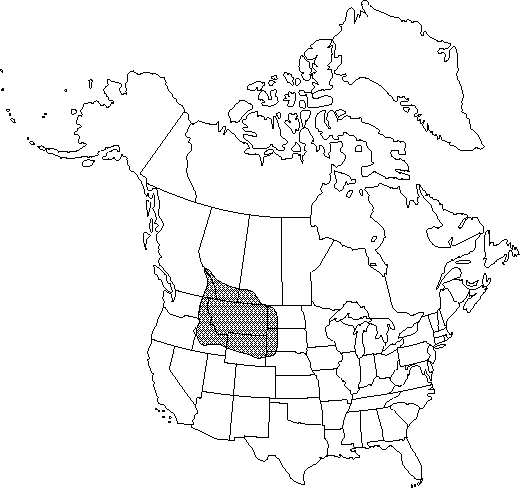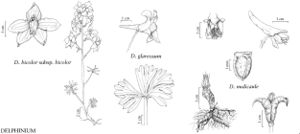familyRanunculaceae
genusDelphinium
subsectionDelphinium subsect. Bicoloria
speciesDelphinium bicolor
subspeciesDelphinium bicolor subsp. bicolor
Delphinium bicolor subsp. bicolor
EndemicIllustrated
Synonyms: Delphinium nuttallianum var. pilosum C. L. Hitchcock
Treatment appears in FNA Volume 3.
Flowers: sepals dark blue to purple, lateral sepals 16-21 × 6-11 mm, spurs 13-18 mm; lower petal blades with cleft less than 2 mm; hairs usually white.
Phenology: Flowering late spring–early summer.
Habitat: Dry meadow edges, sage scrub, open woodlands and edges, not on soils derived from limestone
Elevation: 600-3100 m
Distribution
Loading map...

Alta., B.C., Sask., Idaho, Mont., Nebr., N.Dak., S.Dak., Wyo.
Discussion
Rydberg's Delphinium bicolor var. montanense tends to have more pubescence and larger flowers but is otherwise typical and apparently fully intergrades with D. bicolor subsp. bicolor. Often referred to as one of the low larkspurs in poisonous-plant literature, the plant is abundant on some ranges and is the cause of some livestock poisonings.
Selected References
None.
Lower Taxa
None.
